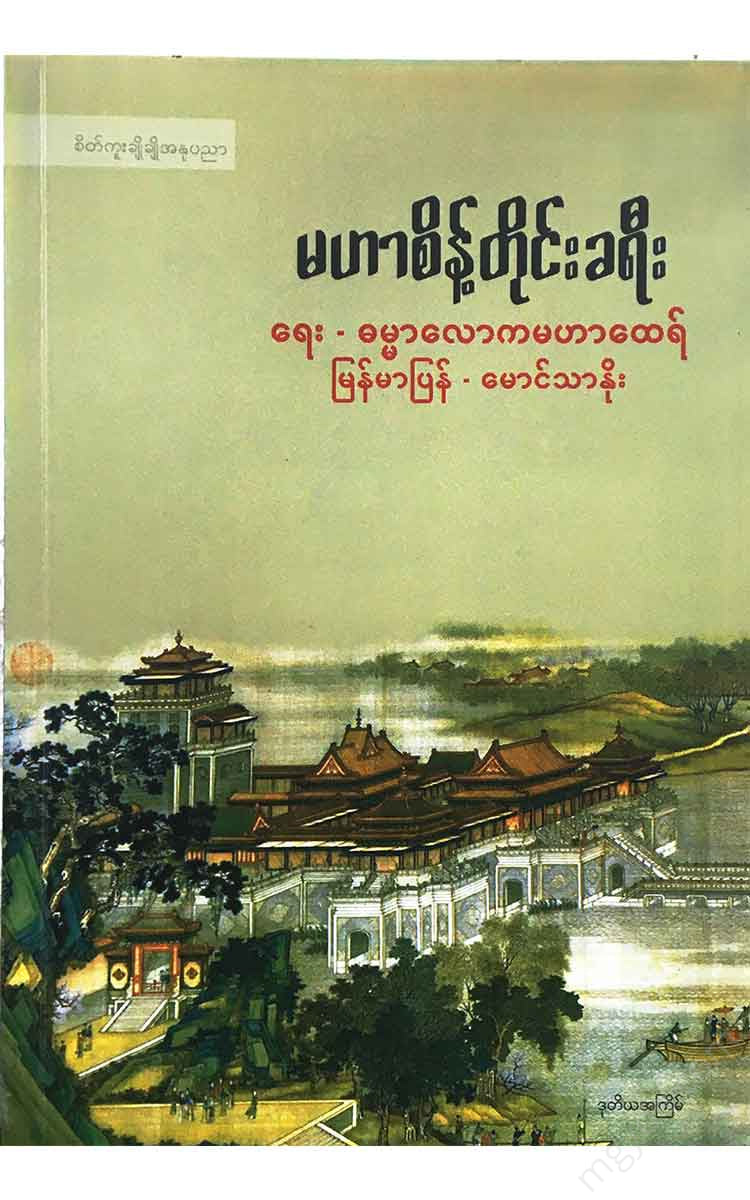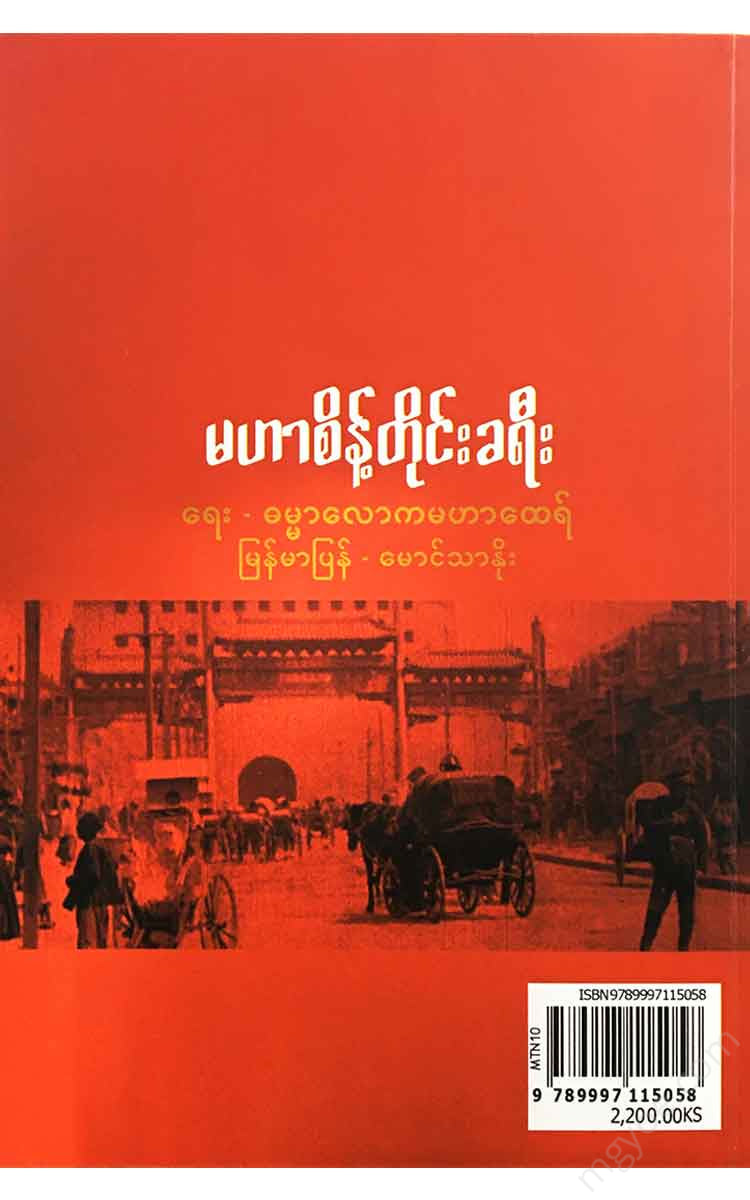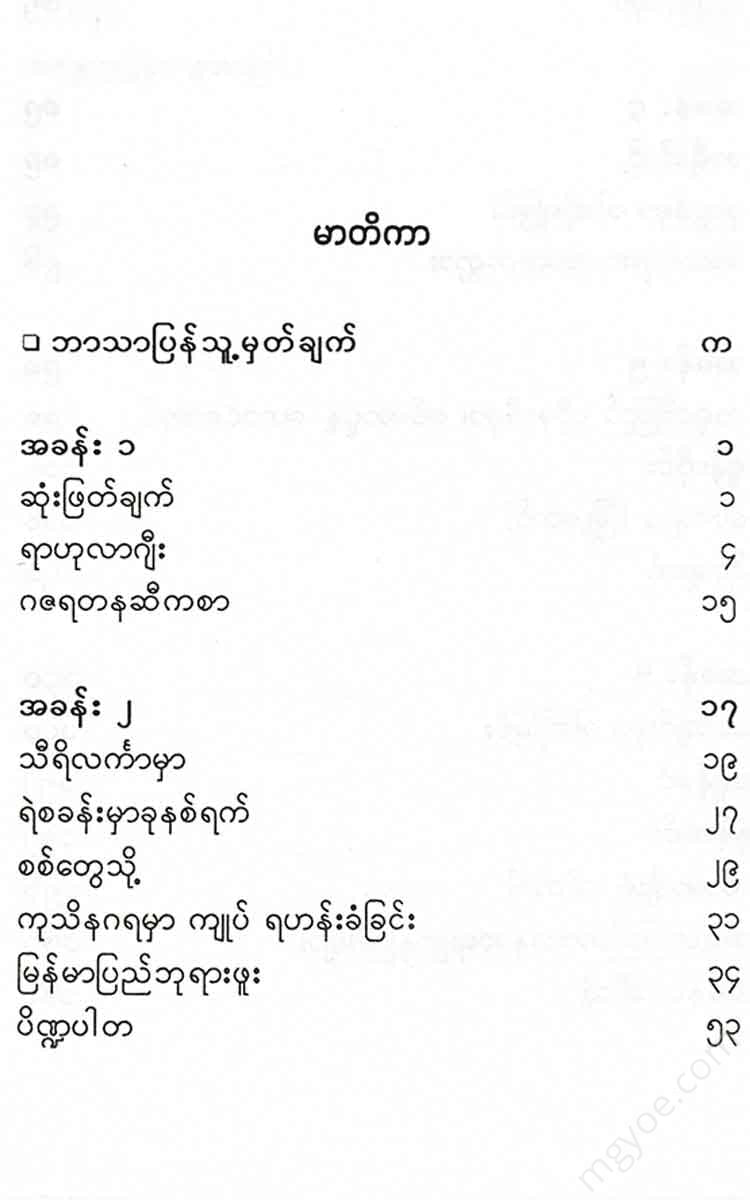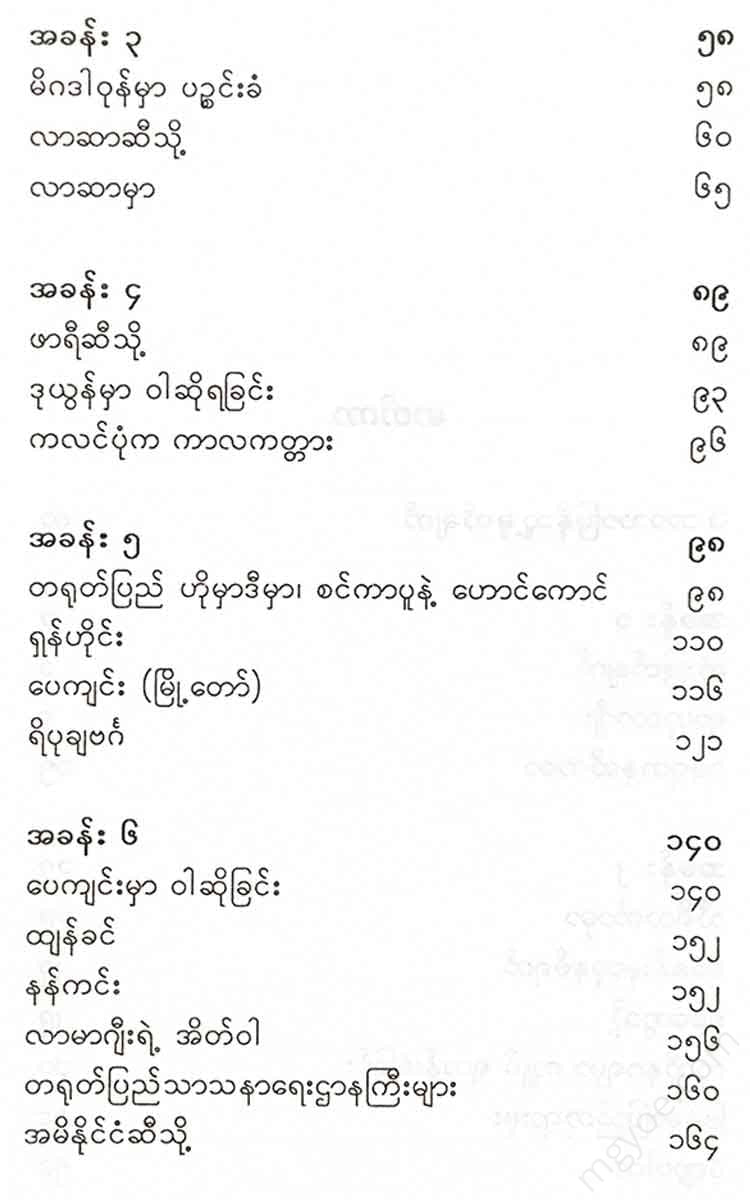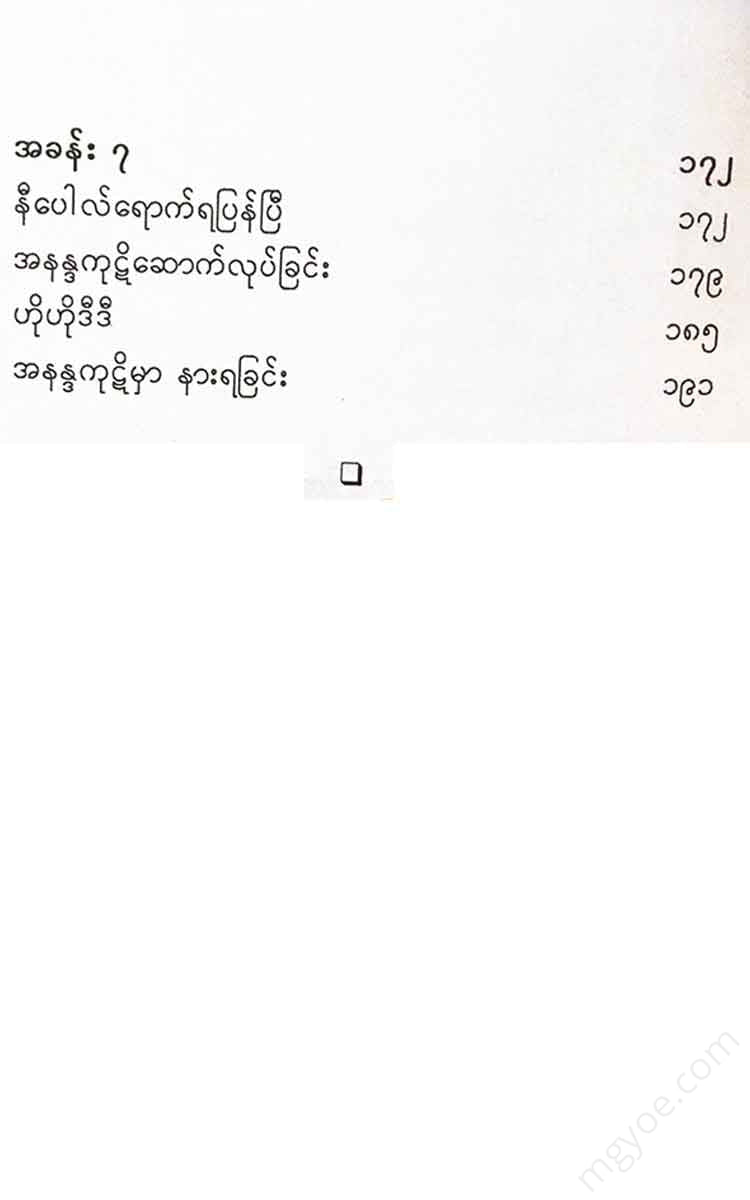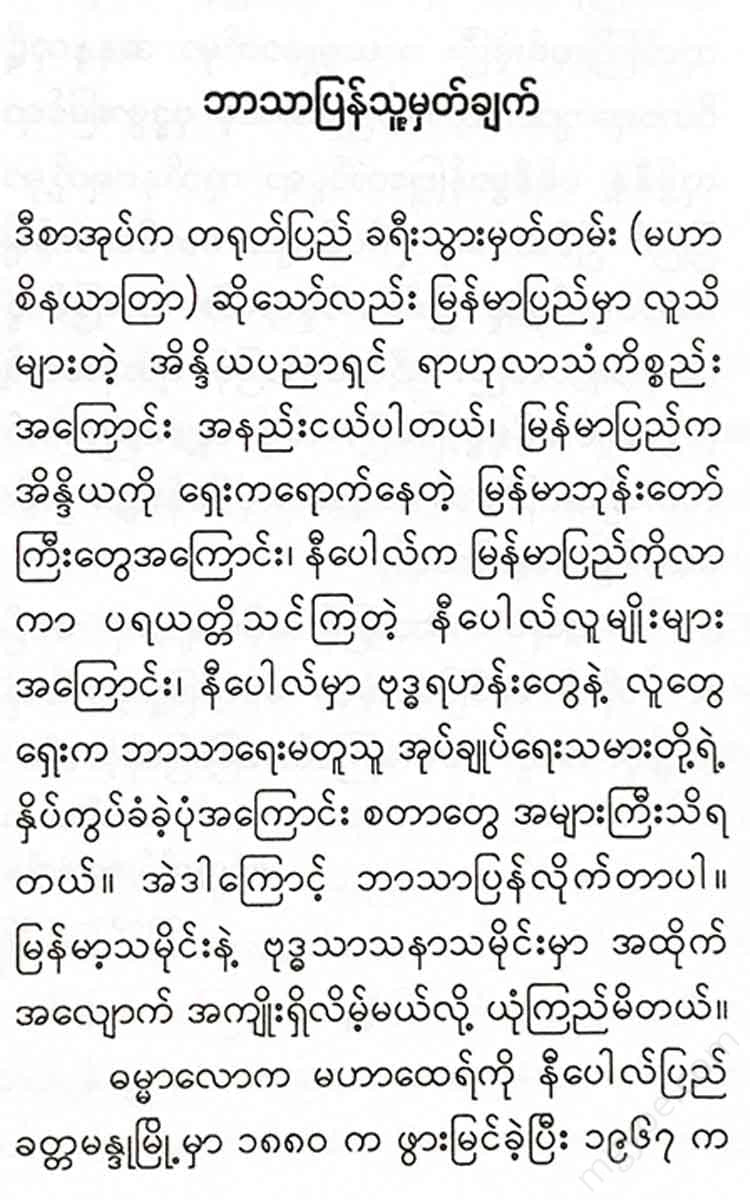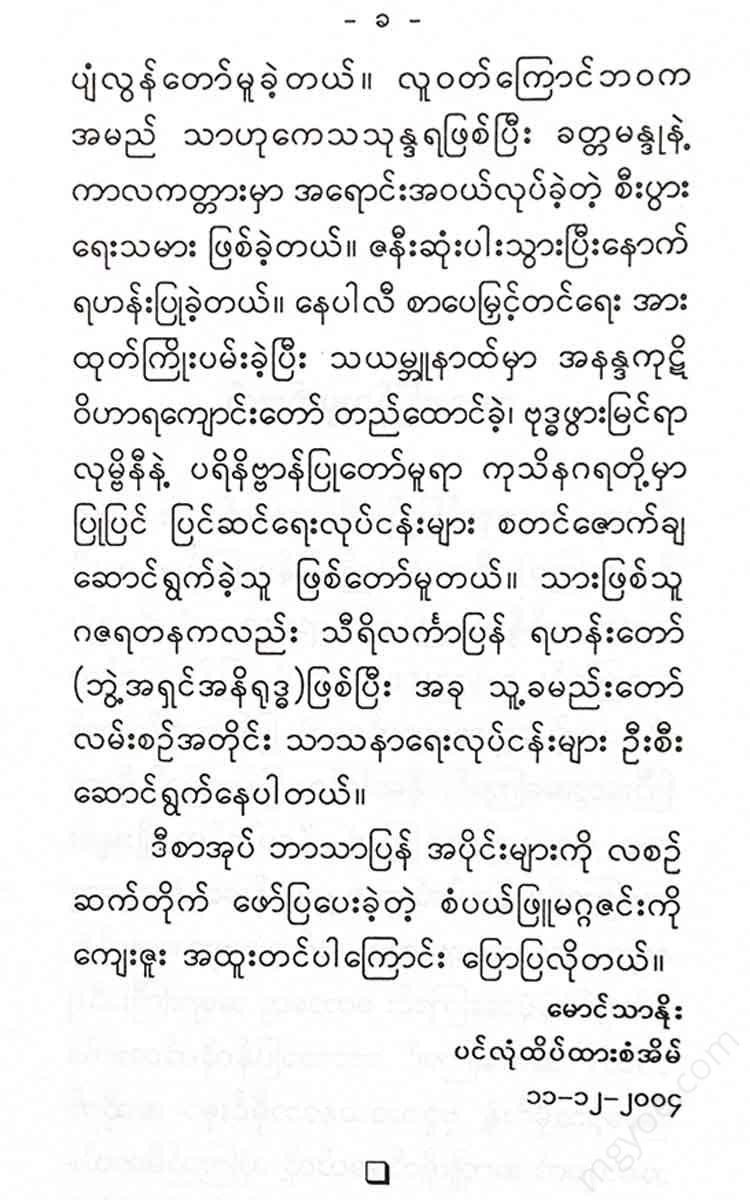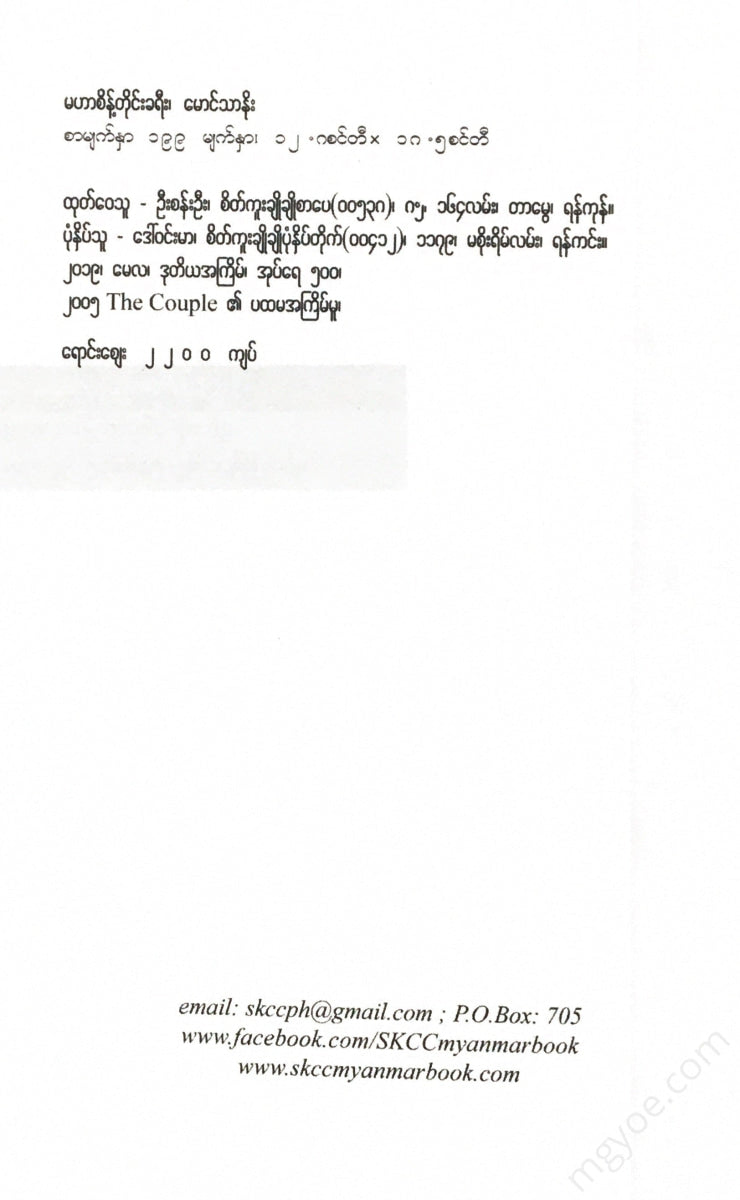စိတ်ကူးချိုချိုစာပေ
Maung Thano - Maha Saint Tain Journey
Maung Thano - Maha Saint Tain Journey
Couldn't load pickup availability
In my early life, I was very fond of attending religious discourses held in the four corners of Kathmandu. I knew all the stories told by the Vaziras and Brahmin pandits. When I went to Calcutta on business in 1970 ( 1913 AD ) , I saw people from Lanka and could not believe that Lanka was inhabited. In the discourses on the Ramayana, they said that Lanka was a land of demons. When I arrived at the Dhammarajika Vihara in the “College Square” founded by Dhammapala in Anagarika, I was again very surprised to learn that Dhammapala was a citizen of Lanka, and that Lanka was inhabited by people, not demons. However, the intensity of the religious narratives was so intense that I had difficulty in breaking the illusion.
Then, in the year 1973 ( 1916 AD ) , when I arrived in Lhasa, I met Tibetans and was surprised to hear that they had seen Jambhayam ( Mahamasri ) and that they had returned from the Panchasira Mountains, “Ripuchavag”. Even though three or four other people said the same thing, I could not believe it. But when other people kept saying it, I thought that I should try to go to the Satsang area and see Mahamanjushri.
After two years in Lhasa, I returned to Nepal. When I went to Lhasa again, I took my eight-year-old son, Ghazratna. My business involved traveling between Calcutta and Lhasa by ferry. Ghazratna was very bad. So I took him wherever I went. Finally, I managed to get him admitted to the Central School in Varanasi. I had to send him 30 rupees a month for his expenses. After three years of training, I saw that the young man had changed a lot. When Ghazratna was brought back to Nepal, many people were surprised to see how much he had changed. So I concluded that education and training are always good.
In the year 1911 ( 1854 AD ) , I returned to Nepal from Lhasa with my son. I was not accustomed to living alone with my fellow monks in Kathmandu, so after three or four months I came to the Kindar Vihara with my son. My youngest son had been living with his grandmother since he was born, and he has remained there ever since.
The renovation work at the Kindala Vihara was not yet finished. So I also volunteered to help with the flooring as much as I could and supervised the work with great enthusiasm. Gajaratana worked in a weaving mill owned by Sri Joggaveera Thihasa near Sri Ghat Vihara. At Kindala Vihara, I used to recite the scriptures like Atithihasika - The Knowledge of the Buddha. During the year, the monk Koumikathaka died of dysentery. Seeing Gajaratana taking care of the monk with a kindness that one would not normally expect from anyone, I thought that if this boy had not been sent to Varanasi for boarding and lodging, I would not have seen such courage. This is not the only case. He did everything he was asked to do, he did it on time and correctly, and he did not understand how to refuse.
Since there were no monks at the Kindal Vihara, Namobuddha was not sent. The matter was being discussed, a Nepalese monk from Baggaon, who was staying at the monastery, was asked to sit at the Kinmala Monastery. The people of the Dukappa community donated money to Guru Shri Sharap Reshe to repair the Sayambu Temple in Khetamandhu, and the Dukappa Lama ( a Tibetan monk ) was preaching the Nyunya Vrata ( restraint ) in Kerukutty and Helambu . The evening vrata is observed by eating only one meal on the first day, and on the second day, not swallowing or spitting out even the saliva that appears in the mouth, and not speaking to anyone. Before sunrise, he would go to bed, take the precepts, and worship the deity of the world 24 hours a day, reciting mantras and chanting mantras, and bowing down to the deity. As the son of Dukkapalama, Bhikkhu Mahatha observed the evening fast on the full moon , the new moon , and the eighth day , and he preached to the public to do the same.
Rahul Ji
We were also busy making arrangements for the evening fast at that time. Lama Sri Sherpa Thergu, a monk of the Dukama Rampaocha (Dukapa sect ) , was also staying at the Kati Maha Buddha ( school ) near Kathmandu. Maha Pandit Rahula Sangam, also known as Swami Maudara Dase, was visiting Kathmandu to observe the Maha Thiruvarur festival at that time. He was looking for people to go to Lhasa, and while he was looking for people, he met with Sri Yeraperjong Lamaji, a monk of the Dukapa sect. Rahulaji conveyed his wish to Dukapa Maha Ji, who, believing him to be a Pandit, promised to send him to Lhasa. So Rahulaji stayed with Lamaji. A month after the Thiruvarur festival, the Kathmandu police were expelling Indians to return to India. Lama Ji kept Rahula Ji hidden from the crowd and arranged food for him. Once, some people from Kinda Vihara invited Dukapala Ji to teach the people about evening fasting. Rahula Ji also accompanied Lama Ji to Kinda Vihara. It was at Kinda Vihara that I first met Rahula Ji.
After meeting Rahulaji, I came to know everything about him that night. Earlier, I did not know him as Rahu. I only knew him as a great Hindu sage named Swami Ramadur Dase. After discussing with him for three or four days, I came to know that Rahulaji wanted to bring the Kanjur and Tanjur from Lhasa and restore the Nalanda University and keep them in the university library.
No. After learning about this ancient artifact, I respected Rahul even more and tried my best to help him. His biggest fear was that before he could go to Lhasa, the Nepali police could come at any time and force him out of Nepal. So he kept himself locked in his room, not meeting anyone there. Even then, people would often line up to see him. Lama Ji was also facing various problems, and even after a month, it was difficult for him to leave Kathmandu. Rahul was very worried and begged to be kept in a secret place where no one could trace him until Lama Ji left.
One day I found the most secret place and took him there. The Ghazratna would send him food in the morning and at night. I don't know what they said. After 15 days and 20 nights like this, he would be sick like Rahu. If he called me and stayed like this, he would die. The Lama Ji had not yet started his journey to Lhasa. When would he start his journey, which way would he go? He said, "Please ask the Lama Ji one last time." I approached the Lama Ji and asked him. He suggested that we leave in a week. The route he chose was the one through Helambu.
When I told Rahulji about this, he hung his head, looked down, and was very sad. Seeing him like this made me worried. So I spoke up. “Sir, if you are so uncomfortable here, why don’t you go to Hell and wait for Lamaji to come? I have some acquaintances there.” Rahulji agreed. I also had to prepare for the trip to Hell. Two days later, I traveled with him to Hellambu.
When we reached Sundarizal, his shoes were so dirty that his feet were bleeding. Seeing that he was walking with great difficulty, as if his feet were broken, we sat down in a shop and rested. How we were to reach the high peak of the mountain was our problem. If we could get a coolie, we could carry him up the mountain. With this idea in mind, I went out in search of a coolie. As luck would have it, I met a strong, well-built Taman coolie. I approached him and asked if he could carry a man to Hell. How much would he pay? He himself would do it for two meals a day and a rupee. I agreed to pay him. When I asked who would carry him, he pointed to Rahulji. Rahul was very tired, but when he asked, the coolie did not argue. He said that he would carry Rahulji on his back and take him to Hell. Both sides were satisfied.
I asked him if he would not take a plank. He said that it was impossible to put such a strong man in a plank. One possibility was to take a piece of wood, drill holes in the corners, tie it with a rope, make a man sit on it and carry the helambu. So I sent the coolie to get the necessary supplies. It was about 8 or 9 in the morning. When the coolie left, we both had some rice and milk porridge at the shop where we were sitting. After we had eaten, the coolie returned with his supplies.
At 11 o'clock in the morning, he put Rahulaji on his back and started climbing the Sundarizal mountain. In the evening, they reached Tamanapatsa. They spent the night there. The next morning, they continued their journey at dawn and spent the night in a house. The next morning, they left early. At about 9 or 10 o'clock in the morning, they reached the house of a Tibetan named Dhamdu Atta Kyauchen in Phalambu. There, they paid the coolie a rupee as a tip, and the poor man was very happy and went back.
After lunch, I told Dhamdur, who was very close to us, about Rahulaji. He told me to take care of the great Indian scholar here until the time when the Lamaji went to Tibet and arrived here. If the Lamaji did not come due to some unforeseen circumstance, he was to send Rahula to Nyalankutti. If the Lamaji came here, there was no need to send Rahula to Nyalankutti. He would just take Rahulaji with him. So after handing Rahulaji over to him, the next day I returned to Kathmandu. On the way, I saw some of the monks and nuns of the Lamaji who were going to Helambu. I told them that Rahulaji had been left in Helambu. They asked me to take him to Tibet with all due respect. So I parted ways with them and returned to Kindala Vihara on the third day. I told Dukpalama everything.
After Rahulaji was escorted to Helambu, we continued to teach the evening fast at Kindalvihara. After a year, we began the morning fast.
